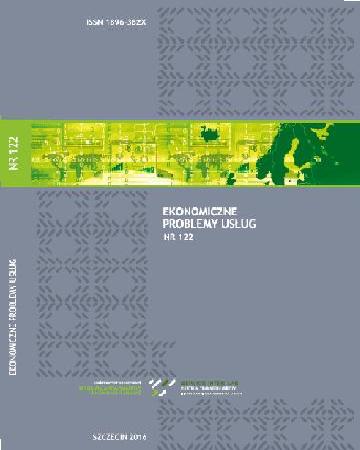
ISSN: 1896-382X
eISSN: 2353-2866
OAI
DOI: 10.18276/epu.2018.131/1-28



Issue archive /
nr 131 (1) 2018
Koszty gotówki i elektronicznych instrumentów płatniczych w Unii Europejskiej
(THE COSTS OF CASH AND ELECTRONIC PAYMENT INSTRUMENTS IN THE EUROPEAN UNION)
| Authors: |
Karolina
Przenajkowska
Politechnika Warszawska Michał Polasik Uniwersytet Mikołaja Kopernika w Toruniu |
| Keywords: | payment instruments cash costs of payments non-cash transactions |
| Data publikacji całości: | 2018-05-24 |
| Page range: | 8 (283-290) |
| Klasyfikacja JEL: | E42 G21 O33 D23 |
Abstract
The aim of the article is to summarize the current state of knowledge on the subject of payment instrument costs in the European Union. It presents the basic definitions used in the calculation of payment costs and the unified methodology of the study proposed in the project directed by the European Central Bank. The results of this research showed that despite a large share in total social costs, cash has the lowest unit costs of payment. However, with the increase in the number of elec-tronic transactions, their social cost is falling, and in countries with a large use of debit cards they are the cheapest method of payments. This suggests the legitimacy of promoting the development of non-cash transactions.
Download file
Article file
Bibliography
| 1. | Brits, H., Winder, C. (2005). Payments are no free lunch. DNB Occasional Studies, 3 (2). |
| 2. | Frame, W.S., White, L.J. (2004). Empirical studies of financial innovation: Lots of talk, little action? Journal of Economic Literature, 42 (1), 116–144. |
| 3. | Górka, J. (2013). Efektywność instrumentów płatniczych w Polsce. Warszawa: Wydawnictwo Naukowe Wydziału Zarządzania Uniwersytetu Warszawskiego. |
| 4. | Gresvik, O., Haare, H. (2009). Costs in the Norwegian payment system: questionnaires. Norges Bank Staff Memo, 5. |
| 5. | Gresvik, O., Øwre, G. (2003). Costs and income in the Norwegian payment system 2001. An application of the Activity Based Costing framework. Norges Bank Working Paper, 8. |
| 6. | Jonker, N. (2013). Social costs of POS payments in the Netherlands 2002–2012: Efficiency gains from increased debit card usage. DNB Occasional Studies, 11 (2). |
| 7. | Norges Bank (2014). Costs in the Norwegian payment system. Norges Bank Papers, 5. |
| 8. | Polasik, M. (2015). Stan i potencjał rozwoju sieci akceptacji kart płatniczych w Polsce. Acta Universitatis Nicolai Copernici. Ekonomia, 46 (1), 23–58. |
| 9. | Quaden, G. (2005). Coûts, avantages et inconvénients des différents moyens de paiement. Bruxelles. |
| 10. | Schmiedel, H., Kostova, G.L., Ruttenberg, W. (2013). The social and private costs of retail payment instruments: a European perspective. Journal of Financial Market Infrastructures, 2 (1), 37–75. |
| 11. | Schneider, F. (2011). The shadow economy in Europe, 2011: Using electronic payment systems to combat the shadow economy. Linz. |
| 12. | Turján, A., Divéki, É., Keszy-Harmath, É., Kóczán, G., Takács, K. (2011). Nothing is free: A survey of the social cost of the main payment instruments in Hungary. MNB Occasional Papers, 93. |